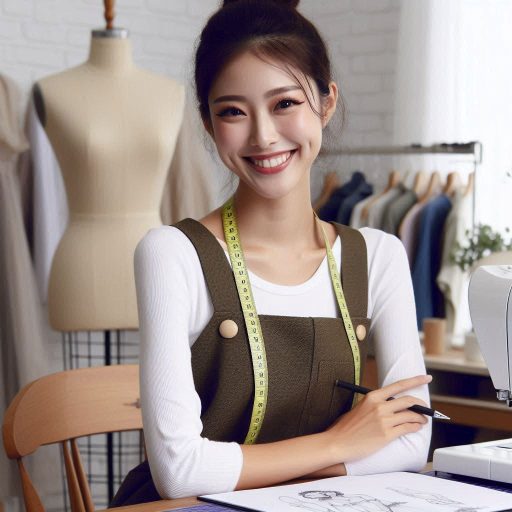Introduction
Movies are a visual feast, and iconic costumes play a vital role in their impact.
These costumes often define characters and set the tone of the film.
Through costume design, movies create unforgettable images that resonate with audiences.
Costumes are more than just clothing; they are essential to storytelling.
They help establish character identities, convey emotions, and immerse viewers in different worlds.
A well-designed costume can elevate a movie from good to legendary.
In this blog post, we will explore several iconic movie costumes that have left a lasting impression.
We‘ll begin with the elegant gown worn by Audrey Hepburn in “Breakfast at Tiffany’s.”
This timeless piece captures sophistication and grace, embodying the essence of Hepburn‘s character.
Next, we will delve into the rugged attire of Indiana Jones from the “Indiana Jones” series.
His iconic hat and leather jacket are synonymous with adventure and bravery, reflecting his role as a fearless archaeologist.
We‘ll also examine the transformative suit of Iron Man from the Marvel Cinematic Universe.
This high-tech armor symbolizes innovation and heroism, showcasing advanced design and technology.
Lastly, we‘ll highlight the distinctive red dress worn by Dorothy in “The Wizard of Oz.”
This costume is central to the film‘s magical and nostalgic appeal, representing innocence and adventure.
These costumes are more than just fabric; they are symbols of characters’ personalities and stories.
By breaking down these iconic outfits, we can appreciate the artistry and impact behind each design.
The Importance of Costume Design in Movies
Costume design plays a crucial role in filmmaking.
It not only defines a character’s look but also enhances their story.
Well-crafted costumes help viewers connect with characters on a deeper level.
Transform Your Career Today
Unlock a personalized career strategy that drives real results. Get tailored advice and a roadmap designed just for you.
Start NowThe Role of Costume Design in Creating Memorable Characters
Costume design is essential in crafting memorable characters.
It provides visual cues about a character‘s personality, status, and evolution.
For instance, Darth Vader’s imposing black suit instantly conveys authority and menace.
Similarly, Holly Golightly‘s elegant Givenchy dresses in “Breakfast at Tiffany’s” highlight her sophistication and charm.
A costume can become as iconic as the character it represents, making it unforgettable to audiences.
How Costume Design Can Enhance the Storytelling in Movies
Costume design significantly enhances storytelling.
It helps to set the time period, location, and mood of a film.
In “The Great Gatsby,” the opulent 1920s attire mirrors the era‘s extravagance and societal shifts.
Costumes can also signify a character‘s journey.
For example, Katniss Everdeen‘s evolving outfits in “The Hunger Games” reflect her transformation from a survivalist to a symbol of rebellion.
Effective costume design adds depth and context, making the story more engaging and immersive.
Some Famous Costume Designers in the Film Industry
Several renowned costume designers have left a mark on cinema.
Edith Head, with her extensive work on films like “Roman Holiday,” is celebrated for her sophisticated designs.
Bob Mackie is known for his glamorous costumes in “Cher‘s TV Specials” and his work with stars like Diana Ross.
More recently, Jacqueline Durran‘s costumes in “Anna Karenina” have garnered acclaim for their innovative blend of historical and modern elements.
These designers have shaped iconic looks that have become integral to the films‘ identities.
Costume design is not just about clothing; it‘s about telling a story and creating an unforgettable cinematic experience.
Read: Costume Design: Tips for New Graduates
Analyzing the costume of Scarlett O’Hara from “Gone with the Wind”
The iconic green curtain dress worn by Scarlett O’Hara
Scarlett O’Hara‘s green curtain dress in “Gone with the Wind” is iconic. Crafted from green velvet curtains, it is both inventive and dramatic.
The dress features a high neckline and puffed sleeves, with a fitted bodice and a voluminous skirt.
Transform Your Career Today
Unlock a personalized career strategy that drives real results. Get tailored advice and a roadmap designed just for you.
Start NowScarlett‘s resourcefulness is evident in this gown, designed from the household curtains after the Civil War devastates her wealth.
The fabric’s rich color and texture mirror her fierce determination and adaptability.
The significance of the dress in the movie
This dress is pivotal in the film.
It symbolizes Scarlett’s transition from a pampered Southern belle to a resilient survivor.
When Scarlett wears this dress, it marks her resolve to face hardships head-on.
The act of using curtains to create a dress shows her refusal to succumb to her dire circumstances.
This costume embodies her innovative spirit and unyielding will to persevere, even when stripped of her former luxury.
The impact of the costume on the character and the audience
The impact on the character and the audience is profound.
For Scarlett, the dress represents both her desperation and her strength.
It highlights her ability to adapt and thrive despite severe setbacks.
For the audience, it becomes a memorable symbol of her character‘s evolution.
The green curtain dress transforms from a symbol of her downfall into a testament to her enduring spirit.
It captures the essence of Scarlett O’Hara’s character and leaves a lasting impression on viewers, reinforcing her role as a complex and dynamic protagonist.
In summary, Scarlett O’Hara‘s green curtain dress is more than just a costume.
It is a powerful emblem of resilience and innovation, deeply influencing both the character and audience.
Read: The Evolution of Costume Design Techniques

Breaking down the costume of Holly Golightly from “Breakfast at Tiffany’s”
The classic black dress and accessories worn by Holly Golightly
Holly Golightly’s iconic look in “Breakfast at Tiffany’s” is defined by her classic black dress and accessories.
This outfit, designed by Edith Head, has become a symbol of timeless elegance.
The dress, a sleek, sleeveless black number, epitomizes simplicity and sophistication.
Its high neckline and form-fitting silhouette highlight Audrey Hepburn’s graceful figure, enhancing her poise and charm.
Transform Your Career Today
Unlock a personalized career strategy that drives real results. Get tailored advice and a roadmap designed just for you.
Start NowHow the costume reflects the character’s personality and lifestyle
Holly’s accessories play a crucial role in defining her character.
The oversized sunglasses shield her eyes, suggesting a desire to remain elusive.
The statement necklace, with its sparkling jewels, underscores her love for luxury and glamour.
Her elegant gloves and updo complete the ensemble, projecting an image of high society refinement.
The cultural influence of the costume
This costume reflects Holly’s personality and lifestyle vividly.
Her choice of a classic black dress suggests both elegance and an air of mystery.
Holly‘s lifestyle revolves around sophistication and high-class socializing, which the dress and accessories perfectly capture.
The luxurious elements of her costume convey her aspiration to be part of the elite, despite her unconventional and somewhat enigmatic lifestyle.
The cultural influence of Holly Golightly’s costume is profound.
The black dress became a symbol of classic chic, inspiring countless fashion trends.
Its popularity endures, making it a go-to reference for elegance and style.
The look has been emulated in various forms, from fashion magazines to modern-day red carpets, highlighting its lasting impact on fashion.
In essence, Holly Golightly‘s costume in “Breakfast at Tiffany‘s” is more than just clothing; it is a cultural icon.
It mirrors her complex personality and lifestyle while leaving a significant mark on fashion history.
Read: Freelance vs. In-House Costume Design Jobs
Deconstructing the Costume of Dorothy from “The Wizard of Oz”
Dorothy‘s iconic costume in The Wizard of Oz is both simple and profound.
Her blue gingham dress and ruby slippers are central to her character and the film’s narrative.
The Blue Gingham Dress and Ruby Slippers Worn by Dorothy
Dorothy‘s blue gingham dress features a classic design with a fitted bodice and full skirt.
This dress symbolizes her innocence and youth.
The white blouse beneath the dress adds a touch of purity.
Transform Your Career Today
Unlock a personalized career strategy that drives real results. Get tailored advice and a roadmap designed just for you.
Start NowHer ruby slippers are the most recognizable part of her outfit.
They are vibrant red and glittering, standing out vividly against the yellow brick road.
The Symbolism of the Costume Elements in the Movie
The blue gingham dress represents Dorothy’s connection to her home in Kansas.
It underscores her simple, everyday life before her adventure begins.
In contrast, the ruby slippers symbolize magic and the extraordinary journey she is about to undertake.
They are not just accessories but magical tools that grant her wishes and help her navigate the Land of Oz.
How the Costume Contributes to the Character’s Journey
Dorothy‘s costume is crucial to her journey.
The blue gingham dress roots her in her past, making her quest to return home more poignant.
The ruby slippers, on the other hand, symbolize her hope and empowerment.
They provide her with the means to overcome obstacles and find her way back to Kansas.
Throughout her adventure, the contrast between her everyday dress and the magical slippers highlights her growth and transformation.
Dorothy‘s costume is not just a series of clothing items; it‘s a narrative device that deepens her character and supports her quest.
Read: Networking Events for Costume Designers
Explore Further: How to Network and Find Art Director Opportunities
Exploring the Costume of Eliza Doolittle from “My Fair Lady”
The Transformation of Eliza’s Costumes Throughout the Movie
In “My Fair Lady,” Eliza Doolittle‘s costumes are central to her character’s evolution.
Initially, Eliza wears simple, ragged clothes reflecting her working-class background.
Her costumes include worn-out dresses and shabby hats, symbolizing her low social standing.
As she begins her transformation under Professor Higgins‘s guidance, her attire changes dramatically.
She dons refined, elegant gowns, signifying her shift from a flower girl to a lady.
Each costume mirrors her growth and the changing perceptions of those around her.
Transform Your Career Today
Unlock a personalized career strategy that drives real results. Get tailored advice and a roadmap designed just for you.
Start NowThis transformation is pivotal, highlighting her journey and the impact of social class.
The Role of Costume Design in Depicting Eliza’s Social Status
Costume design in “My Fair Lady” plays a crucial role in illustrating Eliza‘s social status.
Her initial outfits convey poverty and lack of refinement, reinforcing her role as a lower-class character.
As she progresses, her wardrobe becomes increasingly sophisticated, with luxurious fabrics and intricate designs marking her new social position.
Her final costumes, including the iconic Ascot dress and ball gown, are symbols of her successful metamorphosis.
Costume design effectively communicates her rise in social status, reflecting her personal growth and the societal expectations placed upon her.
The Collaboration Between the Costume Designer and the Actress
The collaboration between costume designer Cecil Beaton and actress Audrey Hepburn was essential for Eliza Doolittle‘s portrayal.
Beaton‘s designs were meticulously crafted to enhance Hepburn‘s performance and the character‘s development.
Hepburn‘s input on the costumes ensured they suited her on-screen persona and supported her acting.
This synergy resulted in costumes that were not only visually stunning but also integral to the storytelling.
The seamless integration of Beaton‘s designs with Hepburn‘s interpretation of Eliza created a memorable and impactful visual representation of the character‘s transformation.
Basically, Eliza Doolittle‘s costumes in “My Fair Lady” are more than mere attire‘they are a visual narrative of her journey, social ascent, and the collaborative effort between designer and actress.
Dissecting the costume of Tyler Durden from “Fight Club”
The iconic red leather jacket worn by Tyler Durden
Tyler Durden‘s red leather jacket in “Fight Club” is a symbol of rebellion and boldness.
This jacket, striking in its vivid color, immediately stands out in any scene.
Its design is sleek and edgy, capturing Tyler’s unorthodox personality and defiant attitude.
The significance of the costume in the film’s narrative
The significance of the jacket extends beyond its appearance.
In the film, it represents Tyler‘s rejection of societal norms.
It embodies his philosophy of anti-consumerism and the desire to break free from conventional constraints.
As Tyler‘s character challenges societal structures, the jacket becomes a visual manifestation of his radical ideas.
The cultural impact of the costume on fashion trends
Culturally, the red leather jacket has left a lasting impact on fashion.
Transform Your Career Today
Unlock a personalized career strategy that drives real results. Get tailored advice and a roadmap designed just for you.
Start NowSince the film‘s release, it has inspired numerous fashion trends.
The jacket‘s boldness and uniqueness made it a fashion statement, symbolizing individuality and rebellion.
Fashion enthusiasts and designers have frequently referenced or recreated the iconic piece, highlighting its enduring influence.
Tyler Durden’s jacket is not just a piece of clothing but a powerful symbol within “Fight Club.”
It visually articulates the character’s themes and philosophies while leaving a mark on popular culture.
Its legacy continues to resonate in fashion, illustrating how a single costume can have profound narrative and cultural significance.
Conclusion
Costume design plays a crucial role in bringing movie characters to life.
It helps convey personality, era, and setting in a visual and impactful way.
The analysis of iconic movie costumes showcased in this blog post highlights the creativity and attention to detail that goes into creating memorable looks for characters.
From the intricate designs of period pieces to the futuristic costumes of sci-fi films, each outfit is carefully crafted to enhance the storytelling aspect of the movie.
As movie lovers, we should take a moment to appreciate the artistry and dedication that costume designers put into their work.
It is through their vision that we are able to visually immerse ourselves in the worlds of our favorite films.
So next time you watch a movie, pay attention to the costumes and how they add depth and dimension to the characters – it’s truly a form of artistic expression that deserves recognition.
[E-Books for Sale]
The Big Book of 500 High-Paying Jobs in America: Unlock Your Earning Potential
$19.99 • 500 High-Paying Jobs • 330 pages
Explore 500 high-paying jobs in America and learn how to boost your career, earn more, and achieve success!
See All 500 High-Paying Jobs of this E-Book
1001 Professions Without a Degree: High-Paying American Jobs You Can Start Now
$19.99 • 1001 Professions Without a Degree • 174 pages
Discover 1001 high-paying jobs without a degree! Unlock career tips, skills, and success strategies for just $19.99!




